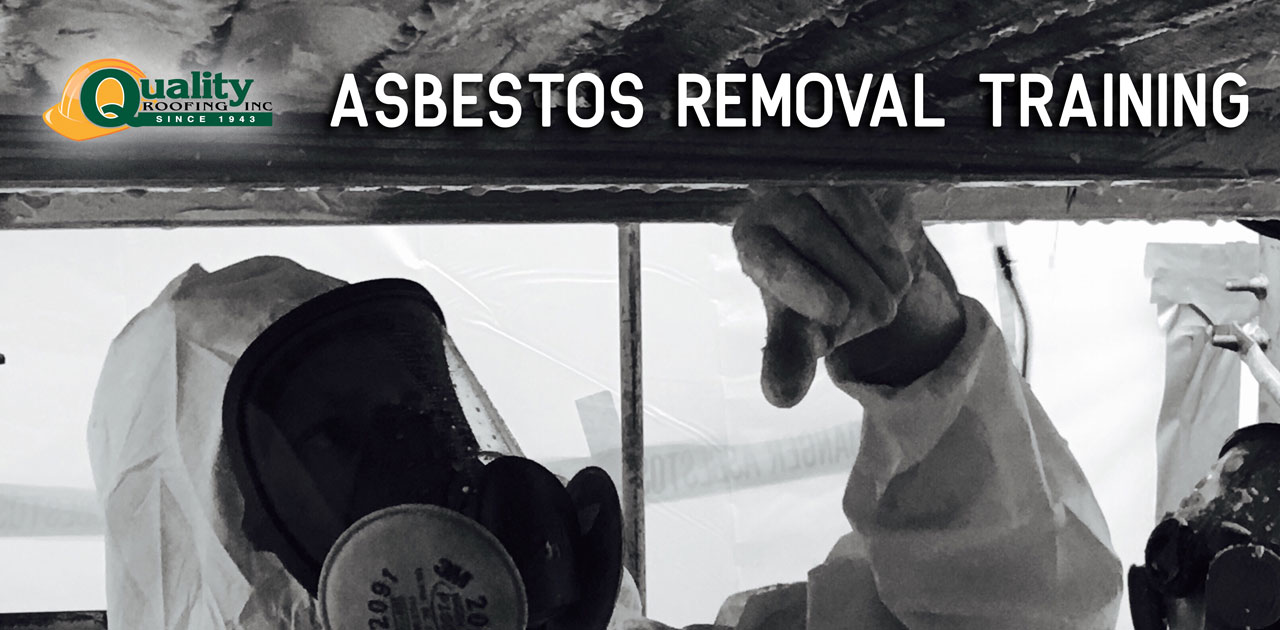 Removal of ACM (Asbestos Containing Materials)
Removal of ACM (Asbestos Containing Materials)Quality Roofing has been certified in the removal of ACM (Asbestos Containing Materials) for more than 30 years. Every 1-2 years, employees complete a refresher training course in which they are taught the proper handling methods and the means to keep the material as safe as possible.
Asbestos is often thought of as a scary substance, but it’s important to remember that removal methods, ventilation, and levels of exposure differ and shouldn’t be confused between roofing and other asbestos containing materials. Asbestos is still legally used in the production of materials today, and can be found in materials such as pipes, automotive, or flooring.
The danger from asbestos fibers comes from inhalation. Low levels of asbestos fiber concentrations exist naturally in the air humans breathe. It’s when these levels become elevated that damage to the lungs occurs. Notably, the Centers for Disease Control and Prevention (CDC) states chrysotile asbestos fibers, most commonly found in roofing materials, may not remain in the lungs as long as other asbestos fibers, resulting in a reduced toxicity
Regardless of occurrence frequency, Occupational Safety and Health Administration (OSHA) and Environmental Protection Agency (EPA) regulations related to removing or disturbing ACRM still demand roofing contractor compliance, and a number of state and local asbestos regulatory actions pose further compliance challenges to those performing ACRM removal.
“Handling asbestos falls under OSHA and EPA regulations, which is something we take very seriously at Quality Roofing,” said owner Pat Begotka. “Safety is number one for us, so we make sure our crews know how to properly remove ACM.”
Asbestos is a term given to a group of fibrous minerals that were used widely in a number of products, including roofing materials, because of their strength, durability and heat resistance. Before the late 1970s and early 1980s, asbestos commonly was used in roofing felts, bituminous flashings, roof coatings, mastics and cements, asbestos-cement shingles, transite panels, and, more rarely, asphalt shingles and felt-based vapor retarders.
Training of all workers performing ACM removals includes the following areas: asbestos recognition, health effects related to exposure, relationship between smoking and asbestos in producing lung cancer, operations that could result in exposure and protective controls to minimize exposure.
OSHA requires the training to include a hands-on portion and take a minimum eight hours to complete. A less restrictive OSHA protocol for worker training, competent person qualification and initial exposure assessment is provided for asbestos roof flashing removals and repairs.
“Through this important training, we help ensure our crews are equipped to safely remove ACM,” said Begotka. “We believe in preparing our team with the knowledge and tools to do any job safely and effectively.”
To learn more, visit www.QRoof.com